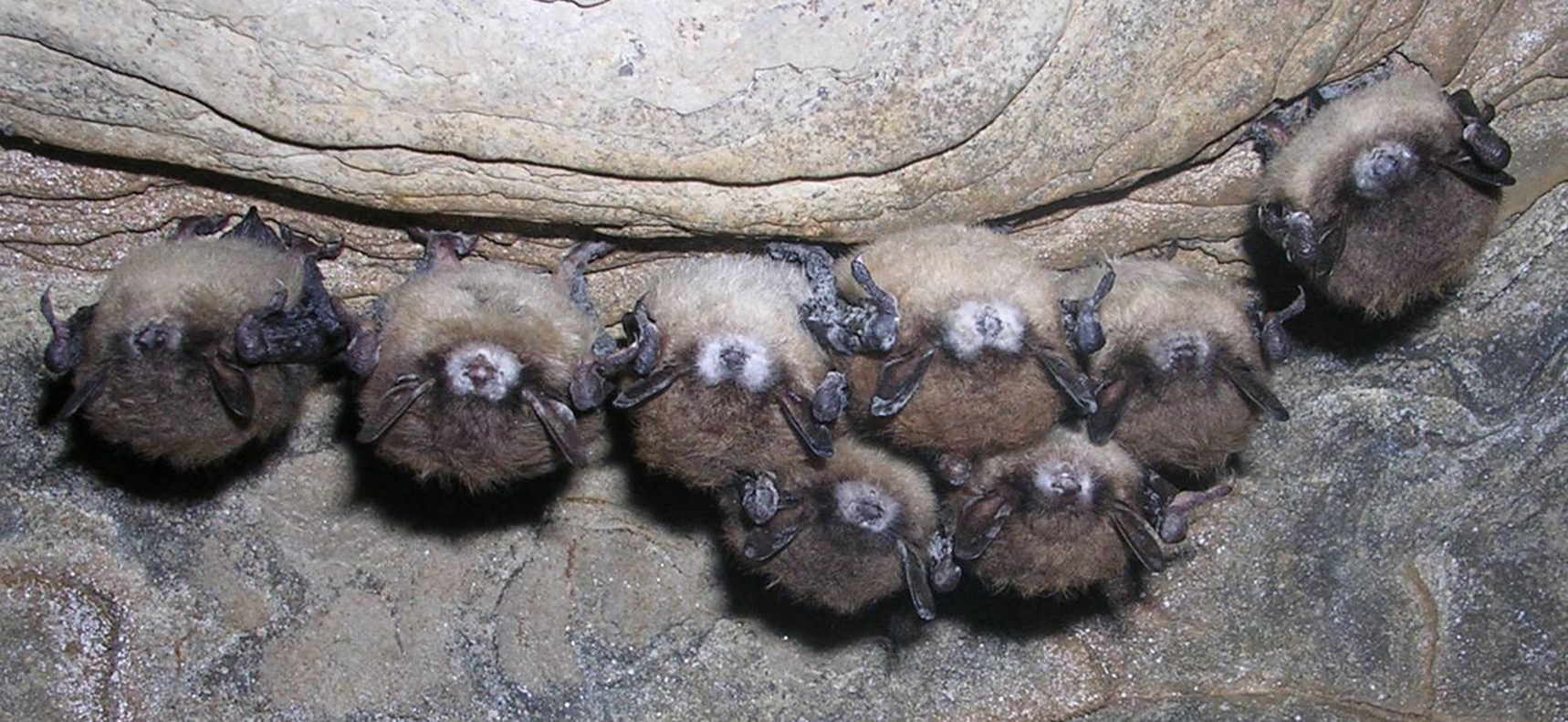
These hibernating little brown bats show the signs of a deadly white fungus on their faces. Maine’s hybernating bat population has been devastated by the fungus.
White-nose syndrome has killed 80 to 90 percent of the state’s hibernating bats.
For most of 2011, Acadia National Park thought it had dodged a bullet.
White-nose syndrome was spreading across the country and millions of bats were dying. In New York. In Massachusetts. In Connecticut. In Vermont. In Pennsylvania.
By late fall of that year, bats were found dead in northern New Brunswick and Nova Scotia.
That December, Acadia’s bats should have been safely tucked away in their caves, asleep for the winter.
They weren’t.
“Just out of the blue, I was still doing some field work with some other things and I started seeing bats flying out in the middle of the day in December. I couldn’t figure out what was up,” said Bruce Connery, wildlife biologist with Acadia. “Then (we) started getting reports of people seeing them on various trails, seeing them flying low to the ground, just not being very coordinated. Having erratic flight. Falling. Hitting the snow.”
Acadia wasn’t alone.
Before long, 80 to 90 percent of Maine’s most prominent bat species were dead.
“Given the sudden rate of decline and the extent of the impact, it’s about as bad as it gets in modern times for wildlife,” said Charlie Todd, endangered and threatened species coordinator for the Maine Department of Inland Fisheries and Wildlife.
Five years later, Maine’s bat population continues to decline, though at a slower rate.
As they look to safeguard what’s left, biologists say there are ways people can help — or, at least, not make the situation worse.
The biggest: As bats wake up this spring and become active over the summer, don’t kill them unless you have to.
“If you took all the progress that bald eagles made for 40 years of conservation efforts and reversed it and accelerated it by five times … that’s what’s just happened to bats,” Todd said. “It’s crisis time for some of them.”
‘Snowball effect’
Eight species of bats live in Maine, all of them integral to the state’s ecosystem. Three species migrate in and out of the state. Five stick around and hibernate between October and April, snuggled together in caves, attics and other humid spots.
White-nose syndrome can affect those hibernating bats.
The disease is caused by a quick-spreading fungus believed to have been brought over from Europe. The fungus, which likes the same humid conditions as bats, gets on the sleeping animals and colonizes, spreading white fuzz across their face, wings and bodies.
“Think of mushrooms growing on you,” said Cory Mosby, furbearer and small animal biologist for Inland Fisheries and Wildlife.
The fungus doesn’t kill the sleeping bats outright, but it does wake them repeatedly. Time and again, the bats are pulled out of hibernation to clean their fur and faces, using up more of their fat and water stores with each unplanned awakening.
Unable to replenish those stores — there are no bugs to eat and little water to drink in the winter — the bats starve or die of thirst. Sometimes, scores of them are found on the ground at cave entrances, dead where they dropped.
If the fungus doesn’t kill them that way, it can lead to holes in their wings — which limits their ability to hunt for food.
White-nose syndrome first appeared in Albany, New York, in 2006 and spread from there. According to the U.S. Fish and Wildlife Service, the disease is now in 31 states and five Canadian provinces and is estimated to have killed more than 6 million bats in the Northeast and Canada.
“It almost had, like, that snowball effect,” Mosby said. “It took a while, it seems, to build momentum and then it just continued to sweep across the eastern U.S.”
Bats are difficult to count and track, but biologists estimate that by 2013 the disease killed 80 to 90 percent of the affected bat species here. The little brown bat and the northern long-eared bat, in particular — once among the most commonly encountered bats in Maine — were all but obliterated.
“We still think they’re probably found throughout the state, but just at 2 percent of the level, 5 percent of the level that they were,” Mosby said. “I hear the story again and again from homeowners that describe how, ‘We have an old barn and you could always go out in the evening and watch the bats,’ or, ‘(We would) watch the bats from our camp, eating insects over the lake or the stream. Now the skies are empty at night.'”
The problem is statewide, including in Acadia, where biologists had thought the park’s bats were doing OK — right up until they started dying.
In 2010, a graduate student caught nearly 400 bats during half a summer at Acadia National Park as part of a research project. Researchers haven’t caught that many there in the past three years.
“They dropped amazingly,” Connery said.
Death rates have since slowed, but biologists aren’t necessarily seeing that as a turnaround.
“We’ve lost most of the main hibernating species that we have,” said Susan Gallo, wildlife biologist for Maine Audubon. “We’re talking about declines of 80, 85, 90 percent of the bats. You know, you can’t keep up that steep a decline.”
It doesn’t help that bats only have one pup a year rather than a whole litter, which means there’s no quick, natural way for the population to rebound.
Some bats may be naturally resistant to white-nose syndrome, which could bode well for future generations. Scientists are also working on ways to prevent the spread of the disease.
But right now, it’s unclear whether the bat population will recover, exist forever at some drastically reduced level or continue to fall toward extinction.
The loss of bats in the environment can affect Maine’s ecosystem, which relies on them to eat billions of moths, beetles, mosquitoes, flies and other insects that come out at night. Without bats to keep them in check, those bugs can plague crops and forests, and spread disease to animals and humans, though no one yet knows to what extent.
“To say that now it’s going to be really dangerous to go along beaches and shore lands because there’ll be (more disease-carrying) mosquitoes or to say spruce forests are going to be ravaged by brown moths or by something, we don’t really have the information to say, ‘Oh, yes, that’s what’s going to happen or not,'” said Connery at Acadia. “But we definitely know there’s all those possibilities out there and we’d rather be ahead of the curve than waiting until it becomes a small catastrophe and then say, ‘Oh, we’ve got to put some energy into this.'”
Biologists fear that all eight of Maine’s bat species are in trouble — if not from white-nose syndrome, then from wind turbines, though some turbine operators have started shutting down the machines when bats are most at risk of getting killed by them.
Three species of bats have been placed on Maine’s list of threatened and endangered species, which provides some regulatory protections and educates the public about animals at risk of being decimated. “Threatened” means a species isn’t doing well in the state and could become endangered without some special attention. “Endangered” means the species is very close to extinction.
The eastern small-footed bat is listed as threatened.
The little brown bat and northern long-eared bat are endangered.
The state considers the other five species in Maine of “special concern,” a kind of precursor to joining the threatened and endangered species list.
Put down the tennis racket
While biologists worry about bats’ future in Maine, they acknowledge the animals don’t have the best public image.
Bats are often considered creepy at best and dangerous at worst. People still equate them with rabies, vampires and getting tangled in people’s hair — all of which are either rare (rabies) or a myth (vampires and hair).
“Bats have long been misunderstood. They’re certainly not looking to get us or anything like that,” said Erik Blomberg, a wildlife population ecologist with the University of Maine in Orono. “I would say count yourself lucky if you live among bats.”
Because Maine, by nature, doesn’t have a lot of good caves for bats, many of the animals spend the winter sleeping in attics, barns and other places used by humans. When they wake in the spring or the pups start moving around in early summer, they sometimes find their way into living areas, which can cause people to lash out.
“If you ask people what would you do if you’re cooking dinner and you find a bat has snuck into your kitchen, the reaction is often get a tennis racket, get some hair spray, just kill it right away,” said Gallo at Maine Audubon. “(Instead), you can just open a window, close the inside doors (to contain the bat in one area). The bat doesn’t want to be in your house any more than you want it (there).”
While biologists are working on ways to help bats in Maine — banning people from bat caves without IF&W permission, looking for new hibernating spots, working on better methods to track bats’ numbers, developing outreach materials for homeowners — they’re encouraging Mainers to put down the tennis rackets.
“If a bat just enters a room, you don’t have to panic,” Gallo said.
The Maine Center for Disease Control says a bat should be captured and sent for rabies testing if it has bitten or scratched a human or pet, or if a human or pet has direct contact with a bat through a break in the skin or in touching the eyes, nose or mouth. A bat should also be sent for testing if it’s found in a bedroom where someone has been sleeping soundly or in a room with an unattended pet, child or someone else who cannot say whether they’ve been bitten.
Bat experts agree with the CDC and say everyone should follow the recommendations.
“No one wants to take a chance with rabies,” said Bill Elliott, owner of Maine Bat Control in Rangeley.
However, the CDC agrees with bat experts who say bats should be allowed to leave on their own when there’s been no contact. And left alone if they are not in living areas. (See sidebar on living with and protecting bats.)
IF&W is also asking for help in tracking bats. It has created a web page where people can report bats. It follows up with those people to see if they are willing to count the bats that leave the roost at night or collect a sample of the bats’ waste so experts can determine which species they have.
Everything can help, biologists say, even if no single effort will save the bats overnight.
“It’s a long-term game plan and I think that’s the hardest thing for everyone to stomach, because you want to do things and you want to do it now,” Mosby said.
Biologists say it could take a long time to get Maine’s bats back to the levels they were in 2011, if it happens at all.
“You’re talking in the order of decades,” Mosby said. “Maybe in the course of my career, my lifetime … if it only took 30 or 40 years for these bats to recover, that would be pretty good.”
The loss of bats in the environment can affect Maine’s ecosystem, which relies on them to eat billions of moths, beetles, mosquitoes, flies and other insects that come out at night. Without bats to keep them in check, those bugs can plague crops and forests, and spread disease to animals and humans, though no one yet knows to what extent.
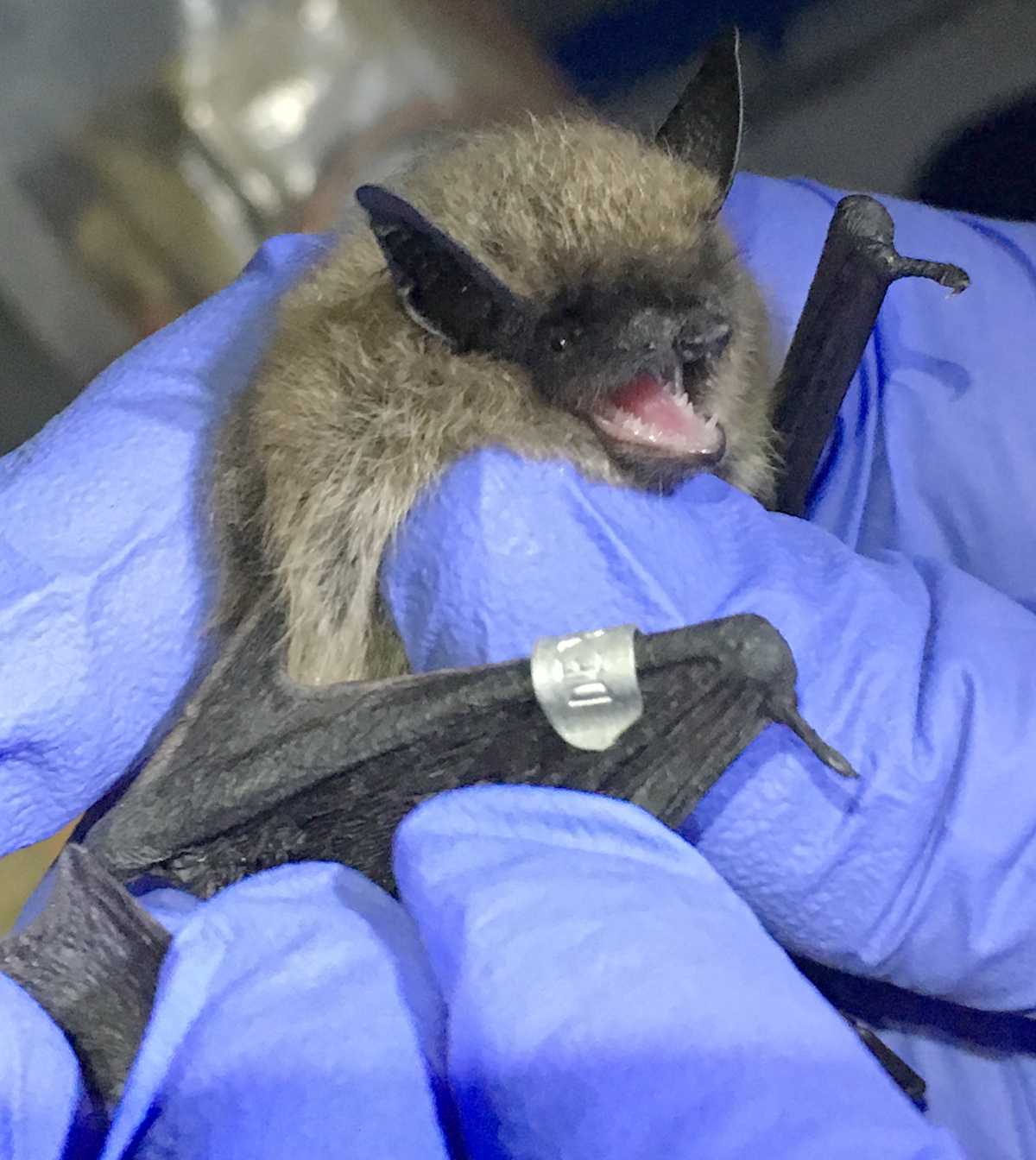
A young male eastern small-footed bat caught last August in Maine. The bat is on the state’s list of endangered and threatened species.
Living with bats
Unlike some other wildlife species, bats aren’t destructive. They don’t chew wires if they get into a house. And by nature, they are afraid of people. For that reason, and because of the benefits they provide, experts urge people to leave bats alone if they aren’t in contact with humans.
For bats that are in a home, barn, shed or other human space but haven’t gone into a living area, the biggest problem comes not from bad behavior but from their accumulated waste, which can smell. Bat droppings may also harbor histoplasmosis fungi spores, which can lead to a lung infection for people who breathe it in, though no cases have been reported in Maine.
If bats must be removed from such areas, a device can be installed to let the animals leave without allowing them to get back in. Cracks or holes in the building can then be sealed to prevent the animals’ re-entry.
Biologists and pet controllers say the process should not kill bats.
“If someone comes to your house and says they’re going to kill all the bats, you got to look for another company,” said Bill Elliott, who has worked in bat control in Maine for almost 20 years.
If removal is the plan, the state recommends it not be done between June and August, the animals’ maternity season. If adult bats leave and can’t return, the babies they’ve left behind will starve and die.
“If they’re not causing any harm or concern, please let them be,” said Cory Mosby at the Maine Department of Inland Fisheries and Wildlife.
For people who are OK with having bats nearby — just not in the same home — bat houses are an option. Although the boxes don’t often work to attract new bats to an area, they may be a good alternative for bats that have been kicked out of their homes nearby.
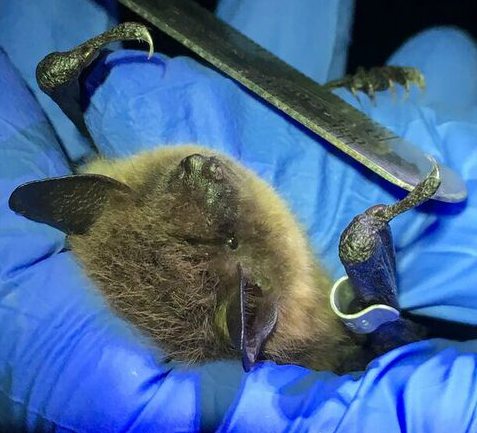
A little brown bat is examined by researchers in Maine.
“Bats have long been misunderstood. They’re certainly not looking to get us, or anything like that. I would say count yourself lucky if you live among bats.”
— Erik Blomberg, wildlife population ecologist with the University of Maine in Orono
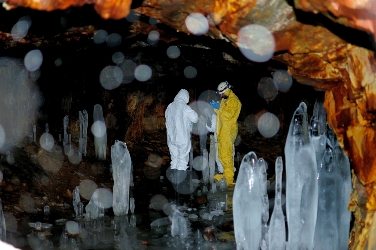
Researchers survey bats for white nose syndrome in Oxford County.
“Then (we) started getting reports of people seeing them on various trails, seeing them flying low to the ground, just not being very coordinated. Having erratic flight. Falling. Hitting the snow.”
— Bruce Connery, wildlife biologist with Acadia National Park
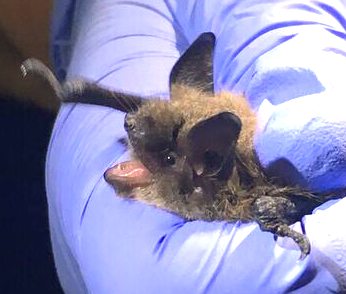
A northern long-eared bat is studied by researchers in Maine last August.
“If you took all the progress that bald eagles made for 40 years of conservation efforts and reversed it and accelerated it by five times. . . that’s what’s just happened to bats. It’s crisis time for some of them.”
— Charlie Todd, endangered and threatened species coordinator for the Maine Department of Inland Fisheries and Wildlife
Comments are no longer available on this story